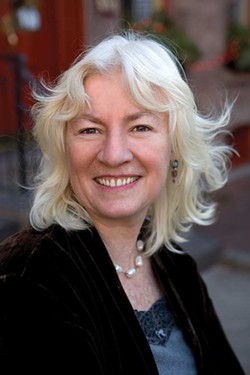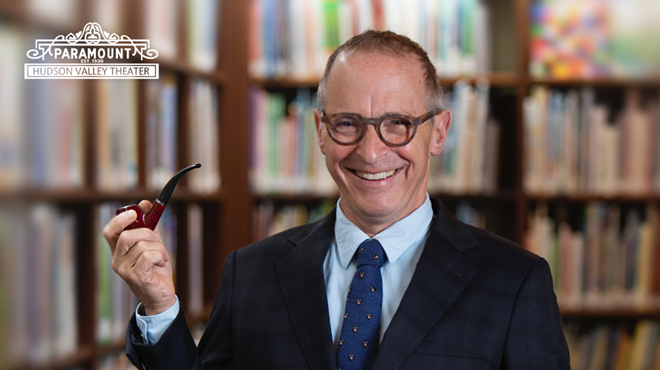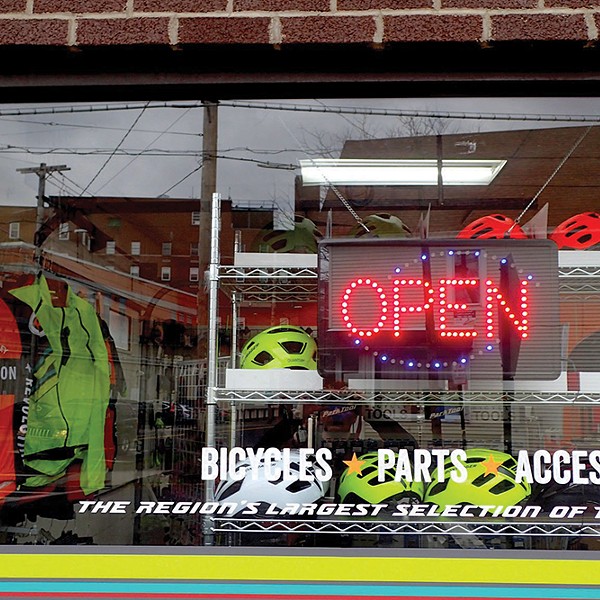In 1999, when Judy Wicks, the oft-cited "mother of localism," took all of the money she inherited out of the stock market and invested it in her local community, friends experienced with money management thought she was crazy. Though she first tried using socially responsible investing vehicles that screened out ethically problematic industries—weapons, big oil, animal testing—she soon realized that that wasn't enough. "I didn't want to invest in the stock market at all," says Wicks. "No publicly traded company fit the bill. By law, [corporations] have to make decisions in the best interest of their stockholders instead of other stakeholders." Though Wicks was advised against taking all of her money out of the stock market—since she'd get a smaller return—she ultimately outperformed the market (after it crashed in 2002) with a locked-in 5 percent return rate. Though considered low in 1999, a 5 percent return is now on the high-end for local investments (a common return these days is less than 2 percent). The unpredictable fluctuations of the stock market is one of the reasons why Wicks recommends investing locally. "When you're investing in the stock market, there's always a chance you'll lose money." And with the instability of the global financial system, Wicks adds, it's a good chance.
But the world of investing does not always have to revolve around dollar signs, and financial security isn't the only reason why Wicks has made it her life's work to nurture and support local buying (a venture that she details in her book that was published last March, Good Morning, Beautiful Business: The Unexpected Journey of an Activist Entrepreneur and Local Economy Pioneer). "When we shop at local stores and invest in local banks and financial institutions, we're keeping capital circulating within our own community," Wicks says. "When we shop at chain stores or bank with large banks or invest in the stock market, we're taking capital out of our communities—capital that's needed to grow our local economy." Investing in local businesses, Wicks notes, results in a living return—the benefits of living in a healthier and more sustainable community. "We build those self-reliant systems by investing in local communities. Then we get the living return of the community's wealth—local food system, local energy system, locally produced clothing. You eliminate imports by going to companies that support local businesses and families—buy supplies locally, hire local lawyers, insurance companies. It's the multiplier effect—when you buy locally, money for the most part stays in the community." And, Wicks notes, it all begins with responsible investing decisions. "You need to invest locally in order to capitalize the new businesses that are needed to build local self-reliance," she says.
Okay—so local investing is important. Really important, it turns out, if there's any chance for a large-scale reconstruction of the struggling economic landscape. But how do you go about it? What are the ways that we can best contribute to the local economy and still feel confident that our money is safe?
When Wicks was first establishing her groundbreaking Philadelphia restaurant, the White Dog Café—known as one of the pioneers of the local food movement—she turned to more traditional local financial vehicles, like local banks, credit unions, and The Reinvestment Fund in Philadelphia. Local reinvestment funds work to revitalize low-income communities by focusing on socially and environmentally responsible development, like affordable housing, schools, local farms, small-scale food enterprises, sustainable energy, manufacturing, and locally owned retailers. There are also several national institutions that invest in locally owned businesses, such as RSF Social Finance and Calvert Community Capital.
Access to local funding and investment vehicles varies depending on the community, though, and not all small towns have established reinvestment funds or credit unions. The number of innovative alternatives that have developed in recent years is a testament to the growing demand for and interest in a more resilient, locally oriented economic model.
One such development is the slow money movement—an outgrowth of the slow food movement. The main avenue of contributing to the community in this model is through the local food industry. Following Paul Newman's axiom, "In life we need to be a little like the farmer who puts back into the soil what he takes out," the slow money movement works to rebuild the economy in pursuit of solutions to questions like, "What would the world be like if we invested 50 percent of our assets within 50 miles of where we live?" "What if there were a new generation of companies that gave away 50 percent of their profits?" "What if there was 50 percent more organic matter in our soil 50 years from now?" The Slow Money organization has invested more than $30 million in 220 small food enterprises around the US since 2010. Slow Money offers different opportunities to get involved, ranging from joining a local chapter or investment club to making a small donation using their soon-to-be-released crowdfunding platform, Gatheround.
At this year's BALLE conference, Jenny Kassan, CEO of California-based Cutting Edge Capital, presented on investment crowdfunding, or the ability for local businesses to acquire investors through in-state public offerings. (BALLE, or Business Alliance for Local Living Economies, is a network of around 30,000 local independent businesses in the US and Canada that Judy Wicks cofounded.) Crowdfunding is a derivation of crowdsourcing, where individuals can reach financial goals through small contributions from many parties (think Kickstarter).
Another new group investing prospect that was discussed at the 2013 BALLE conference is online pooling. Francisco Cervera explained the origins and potential of the online eMoneyPool, which he founded with his brother Luis. Investment pools are similar to crowdfunding, as they both require a collective effort. Pooling involves a network of individuals who put money into a common fund to create a lump sum that goes to a different member every month, which can help finance projects or developments. Like other burgeoning economic models on the web—such as Wholeshare, an online local food group-purchasing platform—the Internet makes eMoneyPool an accessible, efficient, and easy-to-use tool. Yet another innovative investing model presented at this year's BALLE conference is Credibles (a portmanteau of "credit" and "edible"), a model at the nexus of the slow food and slow money movements. The way it works is, local food businesses use lump sums that are paid by customers in advance to fund development, and then the customers can cash in on their credit overtime, when they want to buy food from the restaurant or food retailer.
In addition to new online-based local investing vehicles, there are also homegrown, hyperlocal networks specific to every community, such as the Hudson Valley's brand-new Berkshire-Columbia Investment Network. The network, which consists of five core group members who held their first official meeting on July 10 in Great Barrington, is based on the model of Local Investment Opportunity Networks, which connects local investors with local businesses that need loans. "Local businesses present to a group of investors," says Christopher Schaefer, one of the organizing group members of the Berkshire-Columbia Investment Network. "And then individual investors decide and work out the terms of investment—number of years, interest rate, if it'll be a loan or an equity investment." Before businesses can present at a meeting, Schaefer explains, they are asked to go through a small-business development center in Pittsfield or Albany. "That way we at least know that the businesspeople have put in due diligence and have developed a plan and have financial projections," says Schafer. "I think that the main concern that people have that are interested in putting money to work locally as a way of building up a sustainable economy is the safety question." By making sure these small businesses have a secure plan, there's less risk for investors who attend the Berkshire-Columbia Investment Network meetings, and sessions can be more productive.
Many of the new models for local investing create an image for themselves as a kind of foil to the manic world of Wall Street—where money is fast, constant, out of control, and largely abstract. Opportunities to invest locally are also opportunities for people to reclaim the idea of value. Value is not a concept based only in money. Truly valuable things in life—health, well-being, community—are often priceless. Which means the values that fuel locally oriented models of investing are, in fact, invaluable.


















